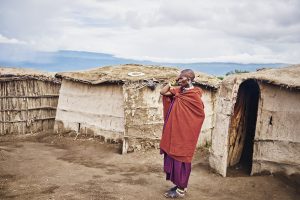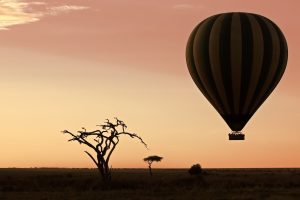Timing is Everything: Discovering the Perfect Season to Explore Kenya and Tanzania
As you plan your dream safari to Kenya and Tanzania, timing is everything. The perfect season can make all the difference in your wildlife encounters and overall experience. From the Great Migration to the wildebeest calving season, understanding the best time to visit these East African destinations is essential.
In Kenya, the peak season from July to October offers incredible game viewing opportunities, as wildlife congregates around the lush grasslands. Witness the dramatic river crossings as hundreds of thousands of wildebeest and zebras navigate through crocodile-infested waters. If you prefer a quieter and more budget-friendly trip, consider traveling during the off-peak season from April to June.
In Tanzania, the Serengeti National Park is undoubtedly a highlight. From January to February, witness the awe-inspiring spectacle of over a million wildebeest giving birth during the calving season. For a chance to see the predator-prey action up close, visit between June and October when the wildebeest make their epic journey from the Serengeti to the Masai Mara.
Whether you choose to explore Kenya or Tanzania, understanding the seasonal patterns will ensure an unforgettable safari experience. So pack your bags and get ready to immerse yourself in the breathtaking landscapes and incredible wildlife encounters of East Africa.
The importance of timing in planning your trip
When it comes to planning a trip to Kenya and Tanzania, timing is crucial. The weather, wildlife migrations, and cultural events all play a significant role in determining the best time to visit. By carefully considering these factors, you can maximize your chances of witnessing incredible wildlife spectacles and enjoying favorable weather conditions.
Weather patterns in Kenya and Tanzania
Kenya and Tanzania both experience distinct weather patterns, with each season offering unique advantages and disadvantages. In Kenya, the dry season runs from June to October, making it the peak tourist season. During this time, the weather is warm and dry, and wildlife congregates around water sources, making for excellent game viewing opportunities.
Tanzania, on the other hand, has two distinct rainy seasons: the long rains from March to May and the short rains from November to December. The dry season, which runs from June to October, is the most popular time to visit Tanzania. The weather is cooler, and the skies are clear, allowing for uninterrupted wildlife viewing.
Peak tourist seasons in Kenya and Tanzania
In Kenya, the peak tourist season falls between July and October. During this time, the world-famous Great Migration takes place, as hundreds of thousands of wildebeest and zebras make their way from the Serengeti in Tanzania to the Masai Mara in Kenya. Witnessing the dramatic river crossings is a highlight of any safari experience.
In Tanzania, the peak tourist season aligns with the dry season, which runs from June to October. This is the best time to visit the Serengeti National Park, as the wildlife is easily spotted around water sources. Additionally, the Ngorongoro Crater offers excellent game viewing opportunities during this time.
Off-peak seasons and their advantages
While the peak tourist seasons offer unforgettable wildlife experiences, the off-peak seasons in Kenya and Tanzania also have their advantages. In Kenya, the off-peak season runs from April to June. Although the weather is wetter, the parks are less crowded, and prices are lower. This is an excellent option for travelers looking for a quieter and more budget-friendly trip.
In Tanzania, the off-peak seasons coincide with the rainy seasons. While the rains can make wildlife viewing more challenging, they bring the landscape to life, with lush green vegetation and vibrant flowers. If you don’t mind the occasional shower and want to avoid the crowds, traveling during the off-peak seasons can be a rewarding experience.
Wildlife migration patterns in the Serengeti and Masai Mara
One of the most awe-inspiring natural phenomena in East Africa is the Great Migration. Every year, millions of wildebeest, zebras, and other herbivores undertake a perilous journey in search of fresh grazing lands. Understanding the migration patterns can help you plan your trip to witness this incredible spectacle.
The migration begins in the Serengeti National Park in Tanzania, usually around January or February, when over a million wildebeest give birth to their young. This is a prime time to visit the Serengeti, as you’ll have the chance to witness the predator-prey action up close. As the dry season progresses, the wildebeest start their epic journey towards the Masai Mara in Kenya, crossing treacherous rivers and evading hungry crocodiles.
Cultural festivals and events in Kenya and Tanzania
In addition to the wildlife experiences, Kenya and Tanzania also offer vibrant cultural festivals and events throughout the year. These celebrations provide a unique insight into the local traditions and customs, adding another layer of richness to your trip.
In Kenya, the Maasai Mara Cultural Festival held in August is a must-see. This event showcases the Maasai culture through traditional dances, music, and storytelling. It’s an opportunity to interact with the Maasai people and gain a deeper understanding of their way of life.
Tanzania is known for its colorful and lively festivals, such as the Zanzibar International Film Festival in July and the Kilimanjaro Marathon in February. These events attract visitors from around the world and offer a chance to immerse yourself in the local arts and culture scene.
Recommended months for specific activities (e.g. safari, mountain climbing, beach vacation)
When planning your trip to Kenya and Tanzania, it’s essential to consider the activities you want to engage in. Whether it’s going on a safari, climbing Mount Kilimanjaro, or relaxing on the pristine beaches, certain months are better suited for each activity.
For a safari adventure, the peak tourist seasons in Kenya and Tanzania are ideal. From July to October, you’ll have the best chances of witnessing the Great Migration and spotting the Big Five. If you’re interested in climbing Mount Kilimanjaro, the dry season from July to October and January to February offers the best weather conditions.
If a beach vacation is on your itinerary, the coastal areas of Kenya and Tanzania are best visited during the dry seasons, from June to October and December to March. During these months, the weather is warm and sunny, perfect for swimming, snorkeling, and exploring the pristine coral reefs.
Tips for planning your trip based on the perfect season
To make the most of your trip to Kenya and Tanzania, here are some tips for planning based on the perfect season:
- Research the wildlife migration patterns and plan your safari accordingly.
- Consider your preferred weather conditions and choose the appropriate season.
- Take advantage of the off-peak seasons for quieter and more budget-friendly trips.
- – Check the dates of cultural festivals and events to enhance your cultural experience.
- Book your accommodations and activities well in advance, especially during the peak seasons.
Conclusion: Finding the ideal time to visit Kenya and Tanzania
Timing is everything when it comes to planning your safari adventure in Kenya and Tanzania. Understanding the weather patterns, wildlife migrations, and cultural events will help you choose the perfect season for your trip. Whether you want to witness the Great Migration, climb Mount Kilimanjaro, or relax on the beautiful beaches, there’s a season that’s just right for you. So pack your bags and get ready to immerse yourself in the breathtaking landscapes and incredible wildlife encounters of East Africa.
Conclusion: Finding the ideal time to visit Kenya and Tanzania
In Kenya, the peak season from July to October offers incredible game viewing opportunities, as wildlife congregates around the lush grasslands. This is the time when the Great Migration is in full swing, and you can witness the dramatic river crossings as hundreds of thousands of wildebeest and zebras navigate through crocodile-infested waters. The sight of these animals braving the treacherous rivers is truly awe-inspiring and a must-see for any safari enthusiast. The abundance of wildlife during this time also attracts predators such as lions, leopards, and cheetahs, making it an ideal season for witnessing exciting predator-prey interactions.
If you prefer a quieter and more budget-friendly trip, consider traveling during the off-peak season from April to June. While the game viewing may not be as prolific as during the peak season, there are still plenty of opportunities to spot wildlife. The landscapes are lush and green, and the birdlife is abundant. Additionally, this is the time when many animals give birth to their young, so you may have the chance to see adorable baby animals taking their first steps in the wild. The off-peak season also offers the advantage of fewer tourists, allowing for a more intimate and peaceful safari experience.










